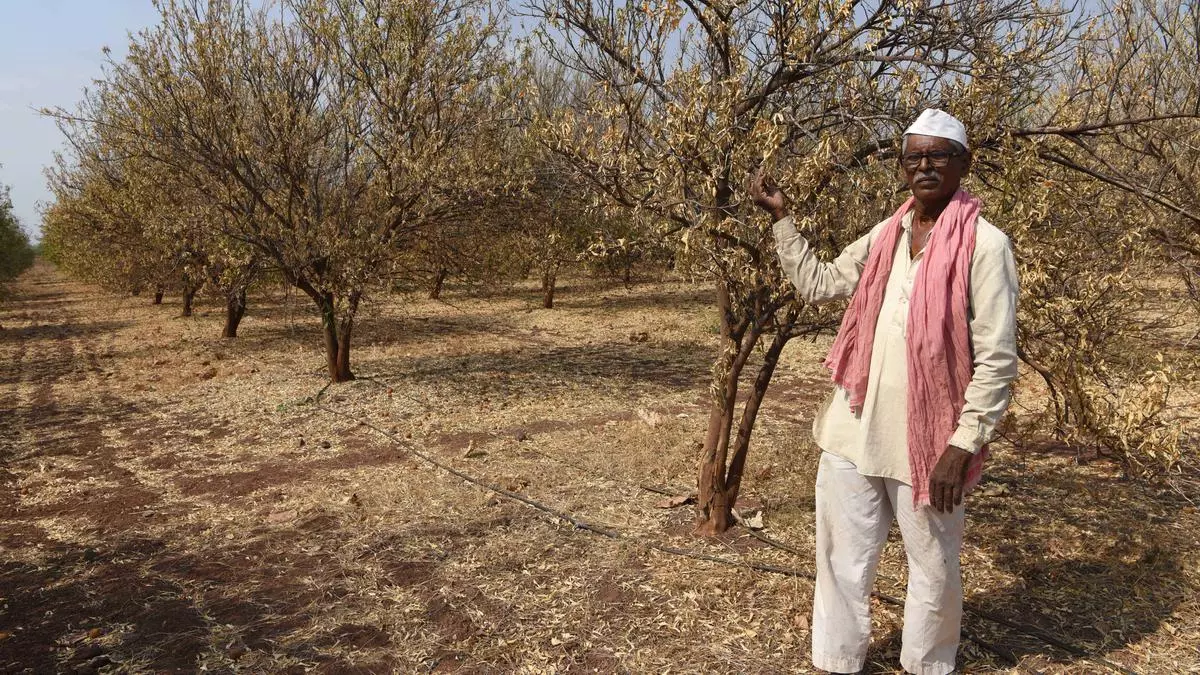Drought conditions worsened in India during March, says US weather body
Drought conditions in India worsened marginally in March with 26.5 per cent of the country’s area being affected due to deficient rains under the influence of El Nino.
According to the National Centers for Environmental Information (NCEI), an arm of the US National Oceanic and Atmospheric Administration (NOAA), droughts were confirmed in northern, eastern and south-western parts of India.
In February, drought conditions were confirmed over northern, eastern, and coastal south-western parts of India on the NCEI’s India Drought Monitor, covering about 25.9 per cent of the nation.
‘Exceptional’ drought
Since El Nino emerged in June 2023, India has experienced deficient rainfall. Since the beginning of the year, the country has received deficient rainfall in nearly 50 per cent of the 711 districts from where data were received. However, Australia’s Bureau of Meteorology announced last week that El Nino has ended.
Weather conditions have become El Nino Southern Oscillation (ENSO) neutral and La Nina, which brings heavy rainfall that could lead to floods, is set to emerge from July.
According to NCEI, drought conditions were exceptional in Kasaragod (Kerala), Dakshina Kannada (Karnataka), Ratnagiri, Satara (Maharashtra), Churachandpur (Manipur), Kargil, Leh in Ladakh, Kurung Kumey (Arunachal), Banda and Fatehpur (Uttar Pradesh).
Quoting media reports, the US weather agency said parched monkeys intensified their behaviour, resorting to attacks such as snatching food in Bengaluru due to drought. It also pointed out how the Garden City was unusually hot in February and March with no rainfall.
Farm lands suffer
Most of the wells and borewells in Bengaluru have run dry, it said. During the weekend, Bengaluru received welcome showers and raised hopes of the Garden city managing the drinking water shortage that it is currently facing.
The monitor said in Assam, the ongoing drought caused the locals of Adarsha Gorehagi village in Biswanath district to resort to age-old ways to please the rain gods.
Global drought information system indicators revealed that dry conditions continued in March 2024 and a significant portion of the world’s agricultural lands suffered from low soil moisture and groundwater levels. Satellite observations showed stressed vegetation in all continents, said NCEI.
“The GEOGLAM (Geo Global Agricultural Monitoring) Crop Monitor indicated that agriculture was most threatened in parts of Central and South America, Africa, Europe, and southern Asia,” it said.
Tropical anomalies weakening
Deficient rains in at least 50 per cent of the country have resulted in reservoir storage dropping to below the last 10-years average at 31 per cent of the capacity. In the southern region, the storage declined to 17 per cent of the capacity. In particular, the level in Andhra Pradesh plunged to 7 per cent of the capacity last week.
Meanwhile, the Climate Prediction Center, an arm of NOAA, said there was a 85 per cent chance of weather conditions transitioning from El Nino to ENSO neutral by April-June and a 60 per cent chance of La Nina developing during June-August.
It said tropical Pacific anomalies were weakening. During the last four weeks, negative sea surface temperature anomaly changes were observed over most of the east-central and eastern equatorial Pacific
